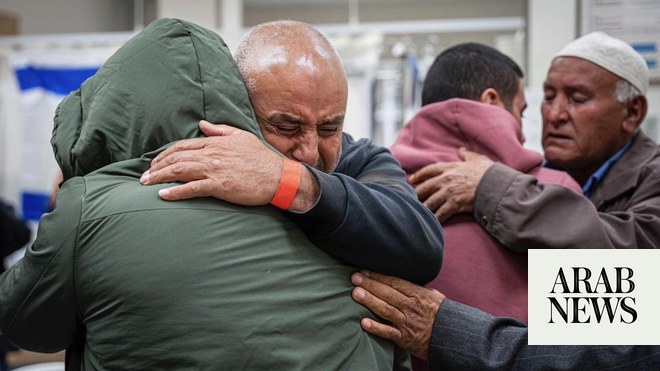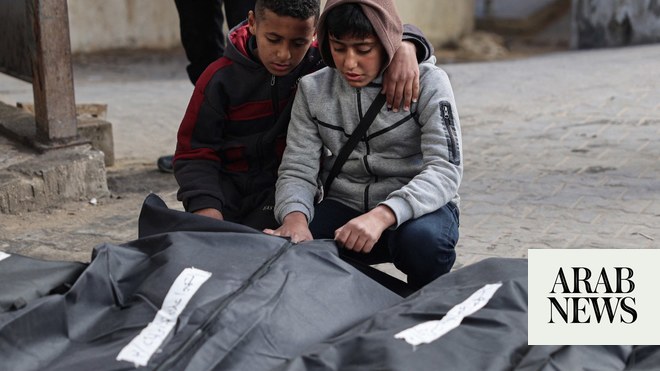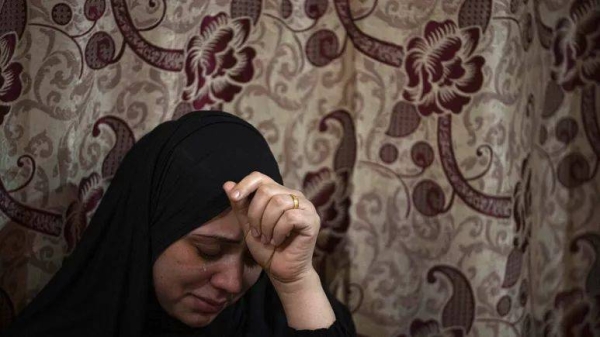
GAZA CITY: With Saudi Arabia resuming Umrah flights, two years after suspending them due to the COVID-19 pandemic, life has returned to normal for the Hajj and Umrah companies based in Gaza.
Religious tourism is the mainstay of Gaza’s Hajj and Umrah companies, even though they have to operate under complicated circumstances due to the Israeli blockade. The majority of the 2 million Palestinians living there are barred from international travel and tourism.
These companies are counting on a recovery in the sector to compensate for the heavy losses incurred during the pandemic.
Two Umrah trips per week of 600 pilgrims depart from Gaza, the first of which set off on March 14, through the Rafah crossing toward Cairo International Airport, and from there to Madinah.
The last Umrah trip from Gaza set off in February 2020, before the outbreak of the pandemic, which paralyzed the world and disrupted many aspects of life.
Gazans expressed their happiness with the return of Umrah flights, and many rushed to register to perform its rituals during the months of Shaban and Ramadan, despite higher prices than before the pandemic.
Several years ago, Ikram Al-Asmar registered herself among those wishing to perform Hajj, but was not lucky to be among the groups of pilgrims selected from Gaza. “When I waited too long, I decided to register to perform Umrah,” she told Arab News.
Al-Asmar’s words were not enough to express her strong feelings and overwhelming happiness to travel, after years of saving money for the pilgrimage.
FASTFACT
The last Umrah trip from Gaza set off in February 2020, before the outbreak of the pandemic, which paralyzed the world and disrupted many aspects of life.
Many Gazans find Umrah trips an opportunity to travel for the first time from, in light of the many restrictions imposed on them for 15 years by Israel, and the deterioration of their living conditions.
Muhammad Hammad went through the experience of performing Umrah five years ago, and intends to repeat the experience again with his wife during Ramadan. “Umrah in Ramadan has a special taste and a great reward,” he said.
Muhammad had promised his wife that he would accompany her to perform Umrah, after she was affected by his talk about the Kaaba and Madinah, but the pandemic prevented them from traveling.
“We did not travel at that time, because God was hiding the best for us by performing Umrah in the month of Ramadan, with the beautiful spiritual feelings and rituals that this holy month brings,” he said.
Hammad believes that the majority of Gazans wish to perform Umrah, and what prevents them is poverty and rampant unemployment among the majority of the population.
The UN Relief and Works Agency for Palestinian refugees estimates that 80 percent of Gaza’s population of about 2 million people, the majority of whom are refugees, depend on relief aid for their livelihoods.
Despite this, Hajj and Umrah companies say that the turnout for Umrah trips this season is good.
The registration witnessed a growth after Saudi Arabia’s decision to exempt pilgrims from Gaza from the institutional quarantine and its fees, bringing the costs down from 1,270 Jordanian dinars ($1791) to 1,150 dinars, according to Muhammad Hamdan, owner of the Doyouf Rahman company for Hajj and Umrah.
The turnout increases during the month of Ramadan, which helps companies in Gaza to get out of the recession crisis and stop the “bleeding” of losses, according to Hamdan.
“The prices are good compared to the services provided and the time spent by the pilgrim in the holy land, but the difficult living conditions in Gaza are what make Gazans feel the high cost,” Hamdan said
Umrah pilgrims from Gaza use Cairo International Airport for both legs of the trip, and have no options to use land routes, like Umrah pilgrims from the West Bank, which explains the great discrepancy in costs.












